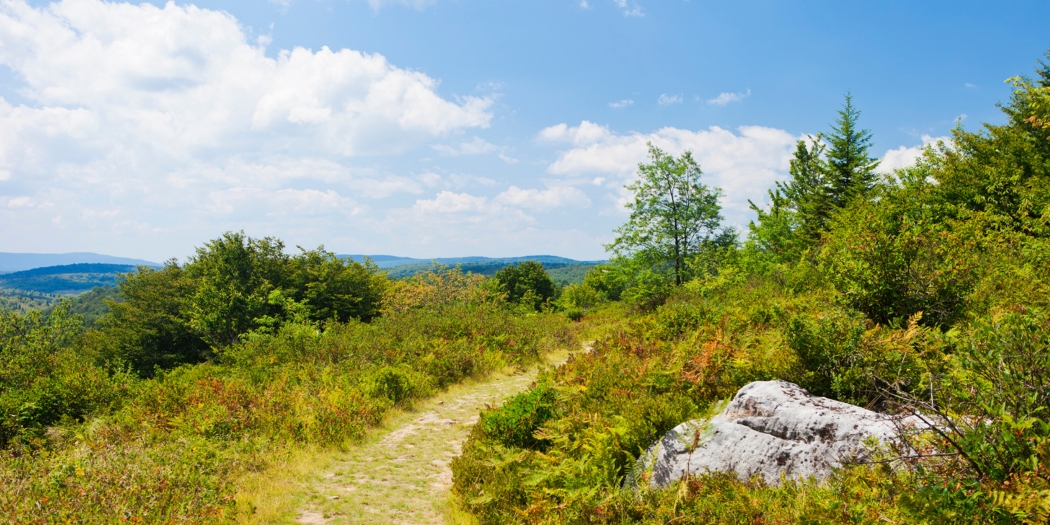By Dave Johnston
In the first part of this discussion, we explored the fact that while Wilderness is supposed to be “untrammeled” by humans and evidence of our temporary presence is to be minimized, purposely constructed and maintained trails can still be compatible with Wilderness, despite being a permanent development.
One of the key goals of the Wilderness Act is to make the experience of Wilderness available for the enjoyment, education, and enlightenment of people. Trails provide access for people but do so in a way that can minimize disturbances that would otherwise occur and make it more likely that human traffic does not degrade the environment or the wilderness experience itself.
It is also an unavoidable fact that if trails were not provided, they would occur anyway. People are drawn to natural areas and designated Wilderness holds special appeal to those looking for a more primitive experience. Unmanaged social trails would inevitably develop as visitors try to follow a “route of least resistance.”
Such trails are notorious for resulting in scarring, erosion, and other environmental damage and often targeting sensitive areas. In contrast, carefully planned and executed intentional trails can provide the same access but be more compatible with the environment and wilderness character.
Ideally, a system of trails in designated Wilderness would be planned from scratch, following contours to avoid erosion, avoiding wetlands and sensitive areas, yet providing access to the scenic and special natural features of the area. In reality, a network of trails almost always exists, which may have been officially planned and constructed at some point by the land manager or may have been derived from previous roads, hunter paths, and social trails.
In extreme cases where logging, mining, or other industrial or commercial activities are part of the history of the Wilderness, the trail system may follow roads, railroad beds, or jeep trails carved out of the landscape. This is the case in Dolly Sods and most of the Wilderness areas in West Virginia. Most of the current system trails follow old railroad beds related to the lumber era of the early 20th century.
Railroad trails have the advantage of gentle grades and contouring around steep hillsides. However, they were designed to expediently get out the cut and operate over a short time frame rather than for long-term compatibility with the environment. Railroad trails and similar roads tend to cut deeply into hillsides, intercepting the flow of water and not allowing for drainage. They often route through sensitive areas and interface poorly with riparian and aquatic zones, leading to potential conflicts with native flora and fauna and contributing to increased sedimentation of streams.
So, not all trails in Wilderness meet the vision of a simple footpath allowing visitor access to the wonders of Wilderness with minimal impact. But we need to make the best of what we’ve got, and that means working with existing trails to make them as compatible with Wilderness as possible.
Not surprisingly, the agencies that manage wilderness lands have extensive standards for trail construction and maintenance. Where applicable, they have specific provisions for trails in Wilderness. As expected, the standards for wilderness trails to be relatively primitive.
The United States Department of Agriculture National Forest’s trail standards categorize trails into five classes based on their intended use and the nature of their location. The upper end, classes four and five, represent paved or gravel trails that may be accessible, are intended for heavy use by casual walkers, and are often found in or adjacent to developed attractions.
At the other end of the spectrum, trails in wilderness are generally class one or two; the least developed and most challenging trails. These trails have uneven or even intermittent tread, protrusions and obstacles are common, scrambling over obstructions may be necessary, the tread is narrow, vegetation is not cleared outside of the path and may impinge on the trail. Trail structures, such as water bars, rock work, bridges, and turnpikes, are minimal to non-existent.
Trails are generally not blazed or marked except when the route is not evident, and staying on the trail is critical. Signs may be used at junctions, but information signs or those for destinations, regulations or resource protection are infrequent.
Note that, as with many things in Wilderness, exceptions to these standards can be made to advance the general goals of Wilderness. For instance, minimally constructed bridges, boardwalks, or puncheons (log spans) can be used for crossing streams or wetlands when rerouting is not practical and potential damage to the environment or user safety outweigh the intrusion of a structure. Decisions about such departures are made using a Minimum Requirements Analysis (MRA), a tool for determining the least intrusive management actions to be consistent with the intent of the Wilderness Act.
So, we have trails, and we have particular expectations for trails in Wilderness. In the final part of this series next month, we’ll look at the realities of maintaining Wilderness trails to both meet the goals of safety and environmentally responsible access but also retain the qualities of wilderness character that we come to Wilderness to experience.

